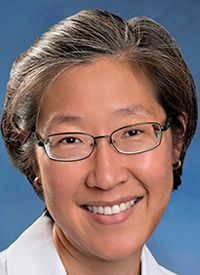Article
Using NGS to Inform More Than Diagnosis in Myeloid Malignancies
Author(s):
Next-generation sequencing plays a critical role in the diagnosis of patients with myeloid malignancies, but it also plays a necessary role in the identification of passenger mutations and subclonal events that go beyond founding drivers.
Annette S. Kim, MD, PhD

Next-generation sequencing (NGS) plays a critical role in the diagnosis of patients with myeloid malignancies, but it also plays a necessary role in the identification of passenger mutations and subclonal events that go beyond founding drivers.
“NGS allows us to interrogate the maximum number of loci with the minimum input of material, representing a much more cost-effective and rapid method of sequencing,” said Annette S. Kim, MD, PhD, an associate professor at Harvard Medical School, and an associate pathologist at Brigham and Women’s Hospital, in a presentation during the 5th Annual International Congress on Oncology & Pathology™: Towards Harmonization of Pathology and Oncology Standards, a program hosted by Physician’s Education Resource®, LLC.
With regard to mutational patterns in myeloid malignancies, common pathways involved with myeloid somatic mutations include the epigenetic, spliceosome, signaling, and transcription pathways. However, the robust mutational pattern starts with clonal hematopoiesis of indeterminate potential (CHIP), which increases in incidence with age, said Kim.
Some of the most common mutational patterns involved in clonal hematopoiesis include mutations in DNMT3A, ASXL1, and TET2, which are all genes that reside in the epigenetic pathway. Splicing gene mutations, such as SF3B1 and SRSF2, tend to occur more over the age of 70. All 5 of these genes represent the most common genes mutated in myelodysplastic syndrome (MDS), said Kim.
CHIP is defined as clonality without cytopenia dysplasia, stated Kim. Alternatively, clonality without cytopenia dysplasia is defined as idiopathic cytopenia of uncertain significance (ICUS). The combination of both is termed clonal cytopenia of uncertain significance (CCUS), which falls short of bonafide MDS because of the absence of dysplasia, said Kim. During the progression from ICUS to low- and high-risk CCUS, the risk of transformation to MDS increases per year of life.
Notably, high-risk CCUS, defined by higher mutational burden, 2 or more mutations, and mutations within particular pathways or genes, has comparable clinical outcomes with low-risk MDS.
“Even without the pathologist being able to call dysplasia, high mutational burden in CCUS should be considered a low-risk MDS,” said Kim.
Additional subclonal diversity, made manifest by mutations in CBL and RAS in chronic myelomonocytic leukemia, SETBP1 and NRAS in atypical chronic myeloid leukemia, JAK2 and CALR in myeloproliferative neoplasms (MPNs), KIT in systemic mastocytosis, and CSF3R in chronic neutrophilic leukemia should not be overlooked, added Kim.
“These genomic classifications prove more impactful in predicting myelofibrosis transformation and even death from any morphologic category,” said Kim.
At the time of progression from a low-grade MPN to a high-grade disease, such as acute myeloid leukemia, progression mutations will typically be acquired in the signaling and transcription pathways.
“I like to refer to these genes as Boston-driver mutations since Boston drivers are highly dysregulated and have a lot of trouble with their signaling,” joked Kim.
These progression events can also occur in epigenetic pathways, Kim added.
When these high-grade myeloid neoplasms are treated, hematopoiesis tends to revert to the earliest clonal hematopoiesis clones, which can persist even in remission.
In summary, Kim stated, “At the time a hematopoietic stem cell goes bad, it contains any number of passenger mutations. When the mutations occur in canonical founding driver genes or the usual suspects and accumulate to a significant clone size, a myeloid neoplasm can occur. The particular presentation of this myeloid neoplasm can be affected by the backseat driver mutations, and at the time of progression, can acquire the Boston-driver mutations.”
Reference
- Kim A. Role of next generation sequencing in testing for mutations in hematologic malignancies (22 minutes for 189 diagnoses). 5th Annual International Congress on Oncology & Pathology™: Towards Harmonization of Pathology and Oncology Standards. June 26, 2021. Accessed June 29, 2021. https://bit.ly/3hd8p0G.


















%20(2)%201-Recovered-Recovered-Recovered-Recovered-Recovered-Recovered-Recovered-Recovered-Recovered-Recovered-Recovered-Recovered-Recovered-Recovered-Recovered-Recovered-Recovered.jpg?fit=crop&auto=format)
%20(2)%201-Recovered-Recovered-Recovered-Recovered-Recovered-Recovered-Recovered-Recovered-Recovered-Recovered-Recovered-Recovered-Recovered-Recovered-Recovered-Recovered-Recovered.jpg?fit=crop&auto=format)
